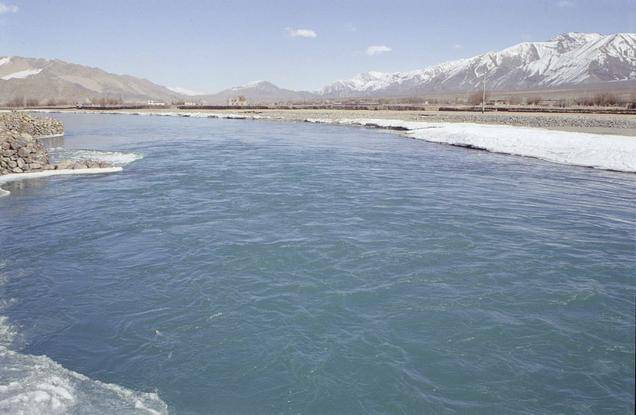Where once the Indus Waters Treaty, 1960 (the 1960 Treaty) was hailed as a confidence building measure between the neighbouring States of Pakistan and India, it seems the past Monday may have put an end to this narrative, with Prime Minister Modi calling for a meeting to review the 1960 Treaty amongst currents that India may unilaterally terminate or suspend the 1960 Treaty.
While India seems to have understood the lack of availability of a legal basis to justify its revocation of the 1960 Treaty, it seems determined, more than ever, to use water as a weapon against Pakistan.
Using water as a weapon must be discerned at this point from the notion of a ‘water war’, for the latter refers to resorting to conventional means of warfare over the issue of water, for instance, water scarcity. Using water as a weapon, however, can be highlighted by India’s plan of action, i.e. to withhold water from Pakistan, which serves as a blatant exploitation of its position of a trustee vis-à-vis its position as the upper riparian.
Article 31 of the Vienna Convention of the Law of Treaties, 1969 (Vienna Convention), includes a treaty’s preamble and annexures as part of the substantive text to be read for its interpretation, in good faith. In this light, it must be noted that the 1960 Treaty, by virtue of its preamble, creates rights and responsibilities between the riparian states ‘in a spirit of goodwill and friendship’ and the provisions thereunder should not be treated as open to exploitation by either State.
Under the 1960 Treaty, Pakistan has, more or less, given up its rights on the three Eastern Rivers (Ravi, Sutlej and Beas) in order to receive, from the upper riparian, a continuous flow of waters in the three Western Rivers (Indus, Jhelum and Chenab).
Should India now move to exploit the water of the three Western Rivers, following a meeting whose subtext seems a clear motive to put pressure on Pakistan, it becomes very hard to interpret these actions in any light other than malafide – making the whole exercise a violation of India’s obligations under the 1960 Treaty.
Reports from the Indian press that India plans to ‘exploit to the maximum the capacity of [the] three … rivers that are under Pakistan’s control … in the areas of hydro power, irrigation and storage …’ seem to highlight the need for a better understanding, on either side, of the 1960 Treaty itself. As per Article III of the 1960 Treaty, India may only make use of these three Western Rivers for domestic, non-consumptive, agricultural and/or hydro-electric power generation purposes, i.e. India is not allowed, at any cost, to build storages on the Western Rivers, save within the limits and in the manner specified under the 1960 Treaty, for example for the purpose of run-of-the-river dams.
Furthermore, Indian journalists and analysts, at the very least, seem mistaken when remarks and news reports from across the border put forward a figure of 3.6 MAF (million acre feet) as being available to India for the creation of dams on the Western Rivers. A brief examination of Paragraph 7 of Annexure E of the 1960 Treaty shows that the amount available to India on the Western Rivers for the creation of Run-of-the-River Dams is, instead, 2.85 MAF (with the remaining 0.75 MAF available as flood storage capacity – a volume that is non-transferrable to other purposes).
Assuming India moves forward with the construction of multiple projects on the Western Rivers, Pakistan may find itself seeing weight in the arguments that water experts such as John Briscoe, a renowned environmental engineer, have been positing for years now – an argument that Indian scholars, such as Mr. Raswamy Iyer, have been down-playing by terming Pakistan’s fears as ‘lower riparian anxiety’. The creation of multiple dams will effectively allow India complete control over the flow of the water in the three Western Rivers, which grants it (albeit with no legal basis) the ability to either stop the water (completely) or, as we have seen in previous years with the flooding of Kasur, the ability to let all the water run over into Pakistani territory. This action, if taken by India, has the potential to be veiled as Indian activity undertaken to fill up or empty and de-silt its dams.
Prime Minister Modi, signaling to Pakistan, was reported by the Indian media as saying that blood and water cannot flow together at the same time. Whether this remark can be taken to find its grounding in India’s self-reflection through its inability to curtail the flow of blood in Kashmir and its currently unfulfilled desire to stop the flow of water to Pakistan, one cannot be sure. The only certainty at this point in time, it would seem, is that Pakistan, while on the one hand fulfilling its legal obligations under the 1960 Treaty, needs to, on the other, step beyond the constrictive technical framework of the 1960 Treaty and look towards other diplomatic avenues to raise its voice on this concern, for an issue of this magnitude must not be taken lightly.






